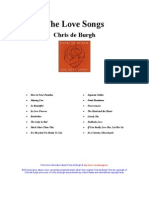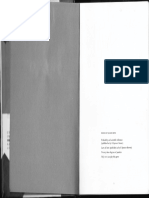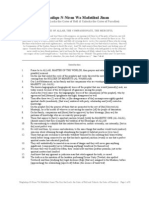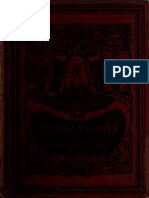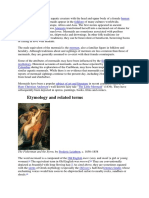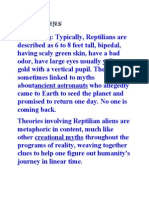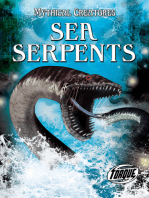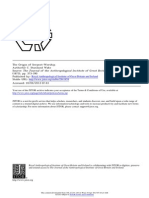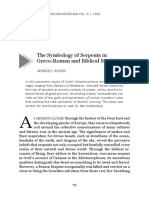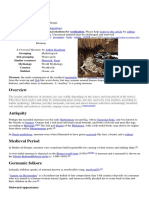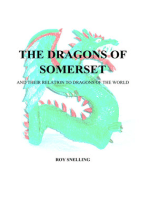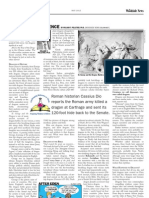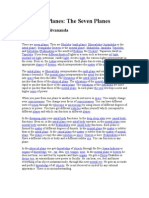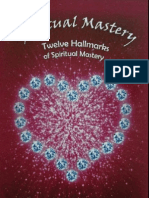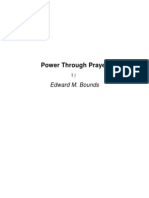Stablepdf3795303.pdfrefreqid Fastly-Defaultd8&Ab Segments &origin &ini 3
Stablepdf3795303.pdfrefreqid Fastly-Defaultd8&Ab Segments &origin &ini 3
Uploaded by
Alec van RijsewijkCopyright:
Available Formats
Stablepdf3795303.pdfrefreqid Fastly-Defaultd8&Ab Segments &origin &ini 3
Stablepdf3795303.pdfrefreqid Fastly-Defaultd8&Ab Segments &origin &ini 3
Uploaded by
Alec van RijsewijkOriginal Title
Copyright
Available Formats
Share this document
Did you find this document useful?
Is this content inappropriate?
Copyright:
Available Formats
Stablepdf3795303.pdfrefreqid Fastly-Defaultd8&Ab Segments &origin &ini 3
Stablepdf3795303.pdfrefreqid Fastly-Defaultd8&Ab Segments &origin &ini 3
Uploaded by
Alec van RijsewijkCopyright:
Available Formats
The Unnatural History of Dragons
Author(s): Louise W. Lippincott
Source: Philadelphia Museum of Art Bulletin , Winter, 1981, Vol. 77, No. 334, The
Unnatural History of Dragons (Winter, 1981), pp. 2-24
Published by: Philadelphia Museum of Art
Stable URL: https://www.jstor.org/stable/3795303
REFERENCES
Linked references are available on JSTOR for this article:
https://www.jstor.org/stable/3795303?seq=1&cid=pdf-
reference#references_tab_contents
You may need to log in to JSTOR to access the linked references.
JSTOR is a not-for-profit service that helps scholars, researchers, and students discover, use, and build upon a wide
range of content in a trusted digital archive. We use information technology and tools to increase productivity and
facilitate new forms of scholarship. For more information about JSTOR, please contact [email protected].
Your use of the JSTOR archive indicates your acceptance of the Terms & Conditions of Use, available at
https://about.jstor.org/terms
Philadelphia Museum of Art is collaborating with JSTOR to digitize, preserve and extend access
to Philadelphia Museum of Art Bulletin
This content downloaded from
95.97.140.75 on Fri, 15 Mar 2024 10:03:17 +00:00
All use subject to https://about.jstor.org/terms
3 Louise W. Lippincott
The Unnatural History of Dragons
"There be some Dragons which descriptions-the
have church was by far
wings andthe most
no feete, some again haveimportant bothauthority.
feeteDragonsand are mentioned
wings,
and some neither feete nor frequently
wings, in Latinbut
and vernacular
are only Bibles, thanks
distinguished from the common to mistranslations
sort of of
one Hebrew
Ser-term signifying
pents by the combe growing water monsters
upon and their
another referring
heads, to a desert
and the beard under their cheeks." ' This seven- mammal now believed to be a jackal.4 Both
teenth-century description in The Historie of creatures were rolled into one Latin term, Draco,
Serpents by Edward Topsell, reminds us that which caused confusion and gave the dragon
dragons have not always resembled the familiar some contradictory characteristics. Consider, for
scaly creatures with wings, horns, and whirling example, the problems of the artist called upon to
eyes that we know today. In fact, before the illuminate Psalm 148. Its seventh line reads
eighteenth century most people believed that the "Praise the Lord from the earth, ye dragons and
dragon was a type of serpent appearing in several all deeps . . ." where the dragon was originally
varieties, similar to the division of dogs into meant to be some kind of fish or whale from the
breeds such as terriers, poodles, and spaniels. "deeps." Yet, there were several other passages
Even when endowed with any number of feet and that clearly proved the dragon lived in deserted
wings, ancient dragons were considered, like regions of the earth. In the Book of Job, the
crocodiles, as large, exotic snakes. Along with afflicted Job, shunned by his neighbors, laments,
the optional wings and feet, other features could"I am a brother to dragons, and a companion to
be added in various combinations, so that many, owls," or, in other words, a filthy outcast in the
but not all, dragons had sharp fangs, three-clawed wilderness. Jeremiah associates dragons with
feet, horns on the forehead or nose, or hairy ears.ruin, disorder, and wilderness: "And I will make
Dragons varied not only in shape, but also in sizeJerusalem heaps, and a den of dragons; and I will
and color. The compiler Topsell listed gold, red, make the cities of Judah desolate, without an
and blue along with the more common green and inhabitant."5 The fifteenth-century illuminator
brown ones. They ranged from small Macedonian of Psalm 148 in the Pembroke Hours resolved the
dragons the size of Saint Bernard dogs to enor- conflict by painting his dragon on dry land, but
mous monsters 150 feet long said to have been set apart from conventional beasts (fig. 2).6
found in India.2
The official attitudes of the church were
For most ancient thinkers, the dragon had one supported by the bestiaries and travelers' tales.
more extremely important characteristic: it wasThe bestiary as known to medieval Christians
dangerous to man. Some believed that the was derived from The Physiologus, a pagan
creature's snaky tail could strangle elephants andcompendium of facts about animals by an
crush humans; others thought dragons could unknown author written some time around the
poison the air with their flaming breath, or that third or fourth century A.D. The Physiologus was
they could poison water. Some, but by no meansthen adopted by Christian moralists, who tagged
all, dragons ate their victims, indicating that didactic messages onto the pagan tales and used
their depredations were motivated by higher the result to teach natural history and Christian
considerations than simple hunger. Mere mortals morality to schoolboys.7 In the manuscript
who encountered dragons died instantly; only versions of the text that have survived, the
gods, angels, saints, and heroes were likely to dragon, "the biggest of all serpents," is compared
survive violent combats with the great snakes. to the devil, "who is the most enormous of all
Such battles usually occurred when a dragon reptiles.. . ."8 Devils and dragons resembled each
threatened an established human community, orother in having combs, in flying, and in use of
when the community wished to expand into their snaky tails for the capture of the unwary.
dragon-infested wildernesses. The majority of Both polluted pure Christian societies. The
the dragons in the Museum and Johnson bestiaries reinforced the biblical image of the
collections can be understood in terms of this dragon as a godforsaken creature, while
archetypal myth of combat between the concurrently presenting him as a danger to
polluting dragon and the purifying hero.3 human life and salvation.
Of the three sources from which medieval Given the weight of tradition and authority that
knowledge of dragons was derived-the Bible and these texts bore, it is not surprising that medieval
church teaching, bestiaries, and travelers' travelers to desert or pagan lands were inclined to
This content downloaded from
95.97.140.75 on Fri, 15 Mar 2024 10:03:17 +00:00
All use subject to https://about.jstor.org/terms
2
1. Saint Michael and Although one mythical beast, the griffin, is the
the Dragon symbol for the Philadelphia Museum of Art, it is
Graduated Missal, fol. 239r
another, the dragon, that appears more
French, c. 1350
Illuminated manuscript, frequently in our collections. Louise W.
image 1/2 x 11/8s(3.8 x Lippincott, assistant curator of the Johnson
2.86cm) Collection, concentrates on the dragon in
Philip S. Collins Collection
45-65-7
Western art in this Bulletin, published in
conjunction with an exhibition-of paintings,
illuminated manuscripts, objects, and small
sculptures-that traces European dragon
iconography from late medieval times to the
nineteenth century. Miss Lippincott received her
doctorate in history at Princeton University this
past summer.
Jean Sutherland Boggs
The George D. Widener Director
This content downloaded from
95.97.140.75 on Fri, 15 Mar 2024 10:03:17 +00:00
All use subject to https://about.jstor.org/terms
discover dragons. Lands that were both desert (fig. 1). Michael, dressed in flowing lavender and
and pagan seem to have had the most dragons. In scarlet robes, bearing wings and a halo, stabs the
the late thirteenth century, Marco Polo, for recumbent dragon in the mouth with a long,
example, ran into some exceptionally fearsome white staff tipped with a cross. Even though he is
"serpents" in his travels in China: "They are less than an inch long, one can recognize the
loathsome creatures to behold. Let me tell you dragon fully equipped with wings, nose horn,
just how big they are. You may take it for a fact ears, and snakelike tail. His fangs are depicted
that there are some of them ten paces in length with minute dots of white paint. The choice of
that are as thick as a stout cask: for their girth this image to ornament the phrase "May the Lord
runs to about ten palms. These are the biggest. bless all the angels who do His word by their
They have two squat legs in front near the head, might and power ..." is explained by the mean-
which have no feet but simply three claws... ing of the Michael story and its relationship to
like the claws of a falcon or a lion. They have the medieval concept of the Christian knight.
enormous heads and eyes so bulging that they are
bigger than loaves, their mouth is big enough to The battle of Saint Michael and the apocalyptic
swallow a man at one gulp.. . ."9 dragon is recorded in chapter 12 of Revelation:
"And there appeared another wonder in heaven;
Modern scholars suspect that Polo had actually and behold a great red dragon, having seven heads
seen a crocodile; some medieval artists, having and ten horns.... And there was war in heaven:
seen neither creature, applied the verbal Michael and his angels fought against the dragon;
description to the more familiar dragon. Dragons and the dragon fought and his angels, and
were also reported by Sir John Mandeville in the prevailed not; neither was their place found any
mid-fourteenth century. Describing the more in heaven. And the great dragon was cast
wasteland around the ruins of the Tower of Babel out, that old serpent called the Devil, and Satan,
in Arabia he wrote, "It is alle deserte and full of which deceiveth the whole world, and his angels
Dragounes and grete serpentes and fulle of were cast out with him."12
dyverse venymouse bestes alle abouten." 10 In
this manner, reliable eyewitness accounts In Revelation, Michael's conquest of the dragon
confirmed the equation between deserts, ended the reign of Satan and cleared the way for
dragons, and godlessness made in the Bible, and the Resurrection and creation of paradise on
the biblical boundaries between godly (Christian) earth. To medieval interpreters of the Bible,
territories and ungodly (dragon-infested) outer Michael became the ideal type of the Christian
deserts could be seen in the concrete terms of the soldier or crusader seeking to fulfill God's orders
earth's political geography. through military conquest. The dragon
represented not only the devil but also the
As one might expect from the parallelism of infidel, the devil's earthly equivalent. Michael
heavenly and earthly geographies, great medievalthrew the dragon out of heaven just as crusaders
battles with dragons were fought in both wished to drive the infidel out of Jerusalem. The
locations. Dragons and angels fought over the archetypal struggle between saint and dragon ban-
boundaries of heaven and hell, while human ished the beast to the outskirts of the Christian
saints contested the limits of the church's world; medieval military and religious life con-
jurisdiction over spiritual and temporal matters sisted of a constant struggle to keep him there.
on earth. The high stakes involved caused many
of these battles to be fought to the death. In these never-ending battles, Michael was
Conquest of a dragon was an important step on invoked as the protector of Christian society,
the thorny path toward individual sainthood andalmost literally as "the angel who made heaven
the creation of a universal Christian society. safe for Christians."13 The multiple nature of the
dragon of Revelation-serpent, devil, and
One of the earliest images of dragons in the Satan-offered the medieval artist depicting the
Museum collections occurs on the pages of a combat a variety of options. Consequently we see
French graduated missal dating from the middleSaint Michael vanquishing dragons ranging from
of the fourteenth century.i" The dragon appears the two-legged, winged wyvem to a very
as part of the ornamentation of a capital letter Bhuman-looking demon.
in one of the choral sections; he is losing the
battle against Saint Michael the Archangel
This content downloaded from
95.97.140.75 on Fri, 15 Mar 2024 10:03:17 +00:00
All use subject to https://about.jstor.org/terms
5
2. Illustration to Psalm 148
Book of Hours (Pembroke
Hours), fol. 204r
Flemish, c. 1460
Illuminated manuscript,
image 29/16 x 21/4 (6.5 x
5.7cm)
Philip S. Collins Collection
45-65-2
This content downloaded from
95.97.140.75 on Fri, 15 Mar 2024 10:03:17 +00:00
All use subject to https://about.jstor.org/terms
6
3. Saint Michael and
the Dragon
Book of Hours, p. 121
French, c. 1480
Illuminated manuscript,
image 1% x 1%" (4.13 x
4.13cm)
Philip S. Collins Collection
45-65-15
Other artists emphasized the satanic charac-The propensity of Saint Michael's dragon to
teristics of Saint Michael's dragon using theexhibit demonic qualities and behavior is
parallels between devils and dragons drawn consistent
in with the angelic status of the saint
the bestiaries. The illuminator of a French book and the location of the battle on the outskirts of
of hours, working around 1480, drew the creature heaven. Michael's opponent is clearly a
in human form covered with scales (fig. 3). supernatural as well as an evil creature-an
Like a dragon, he has bat wings and three important distinction for an age that held that
claws on each arm and leg. Furthermore, the dragons existed naturally on earth. The demonic
demon sprawls on the ground beneath the saint,associations, along with Saint Michael's wings
turning his head up and around to confront his and fantastic armor, situate them in the visionary
enemy. In other words, his pose is very simi- world of Revelation. These specifications of
lar to that of the tiny dragon from the four- protagonist and place help to differentiate the
teenth-century French missal; and, in fact, is heavenly battle from its earthly equivalent, Saint
more typical of dragons than demons. The mostGeorge's conquest of a dragon in Libya in the
demonic of the Museum's dragons appears in a third century A.D. While the images of Saint
mid fifteenth-century Flemish or French book of Michael tended toward the unreal and fantastic,
hours (fig. 4). He has a human body and head, and depictions of Saint George emphasized the
he stands upright, clutching a weapon in his earthly nature of their encounter.
talons, but a few dragonlike features persist: the
demon has three claws on his arms and legs, andThe themes of military triumph and the founding
he breathes fire at his opponent. Saint Michael's of a Christian community familiar from the
tactics against this antagonist also seem more Michael story also run through the most popular
suited to human than draconian foes. He kicks legends of struggle between saint and dragon,
the creature in the groin with his left foot and that of Saint George. While many of us recognize
raises the sword in his right hand for the coup the image of the knight on his white steed
de grace. rescuing a handsomely dressed maiden from a
dragon, few now realize that the story
This content downloaded from
95.97.140.75 on Fri, 15 Mar 2024 10:03:17 +00:00
All use subject to https://about.jstor.org/terms
7
4. Saint Michael and . -- . migilpm, . I
the Dragon 4
Book of Hours, fol. 351r . . - . . I
Flemish or French, c. 1450
Illuminated manuscript, . ilw- - -AIA
image 31/4 x 2%" 8.26 x
6.67cm)
Philip S. Collins Collection
45-65-5
5. Saint George and
the Dragon
Book of Hours, p. 126
French, c. 1480
Illuminated manuscript,
image 11/2 XllS/16" 13.8 x
4.92 cm)
Philip S. Collins Collection
45-65-15
represented more than a model of chivalrous and the death of the dragon followed, and George
behavior to damsels in distress. According tohad rescued a community from the joint dangers
Jacobus de Voragine, the thirteenth-century of dragons and paganism. George followed up this
author of the colorful, but not always accurate, feat with several other miraculous escapades, and
Golden Legend, George was a Christian officer diedina martyr's death in A.D. 287.
the Roman army stationed in Libya-a pagan,
desert area. "A chance journey took [George] Like one his prototype Saint Michael, George came to
day into the neighborhood of Silena.... In this be viewed as a protector of medieval Christians.
town, in a deep lake as large as an ocean, there In the Flemish Pembroke Hours of around 1460,
dwelt a horrible dragon, who many times hadmention put of George's conquest of the "pestiferum
to flight the men who came armed against him, draconem" and rescue of the princess is followed
and who was wont to prowl about the city wall; by a request for protection from visible and
poisoning all who came within reach of his invisible enemies-the joint evils of physical and
breath. In order to appease the fury of this spiritual danger combined within the dragon.Is
monster, and to keep him from destroying the
whole town, the burgesses had been offering In himmost illuminated manuscripts, George
two sheep every day."14 When the town began appears
to as a well-equipped medieval knight, who
run out of sheep, they offered the dragon human spears his dragon in the mouth. Within this
sacrifices; George arrived just as the daughtericonographical
of framework, however, artists have
the king was preparing to do her civic duty. enjoyed a great deal of latitude. A version of the
Ignoring the maiden's suggestion that he seek a from the late fifteenth century presents
scene
safer distance, George stunned the creature with George with an antagonist that the twen-
a blow from his lance, then ordered the princess tieth-century viewer recognizes instantly
to bind it with her girdle. Together they led the-not a dragon, but a crocodile (fig. 5). As we
dragon into town, where George threatened know to from bestiaries and Marco Polo's accounts,
unleash it on the inhabitants if they would not crocodiles were thought to be large and
convert to the Christian faith. Their conversion dangerous oriental serpents who lived in deep
This content downloaded from
95.97.140.75 on Fri, 15 Mar 2024 10:03:17 +00:00
All use subject to https://about.jstor.org/terms
8 7. Attributed to Agnolo
Gaddi
(Florentine, 1351(?)-1396)
Legend of Saint Sylvester
Panel, 111/2 x 15" (29.2 x
38.1 cm)
John G. Johnson Collection
Cat. no. 9
water, ate people, and were killed when hunters back of his head, and twisted tail match written
rammed razor-tipped lances down their throats. descriptions of the dragon exactly. In fact, the
Since George's dragons and the crocodile, bothartist's quest for verisimilitude led him to draw
serpents, shared these significant physical and the dragon's tail wrapped around George's leg, in
behavioral characteristics, the medieval reference to a famous piece of dragon lore
illuminator's substitution of one for the other is recorded in bestiaries, which may also have
understandable. The dragon's squat legs, absence suggested the visual image: "It has a crest, a
of wings, and long tail are crocodilian. Further- small mouth and a narrow gullet through which
more, the scaly back, on which both horse it draws breath or puts out its tongue. Moreover,
and saint trample, suggests the hardened skin of its strength is not in its teeth but in its tail, and it
the reptile, which medieval naturalists believed inflicts injuries by blows rather than by stinging.
was too hard to pierce with any weapon.16 . . . Even the Elephant is not protected from it by
the size of its body; for the dragon, lying in wait
A version of Saint George and the Dragon from a near the paths along which the elephants usually
French book of hours of around 1480 is nearly as saunter, lassoes their legs in a knot with its tail
bizarre as the preceding two (fig. 6). George, and destroys them by suffocation."17 The George
wearing the familiar white coat with red cross of the Pembroke Hours faced death by poison or
over his armor, kills his enemy with a spear engulfment, while his French counterpart would
thrust in the mouth. His animal opponent, have suffocated had he lost the battle.
however, resembles nothing so much as an
aardvark. Aardvarks were, of course, unknown to The peculiar iconography of Saint George and the
the medieval world (at least as recorded in Dragon represents one artistic solution to
bestiaries), so this dragon must actually be a problems inherent in the portrayal of sacred
composite creature, invented to conform to a history. The saint's life and adventures are
verbal description from a text. The narrow accepted and depicted as historical facts, and the
throat, long jaw, flaming breath, comb on the protagonists are drawn with the greatest possible
naturalism. George is dressed as a contemporary
knight, while the dragon's image is taken from
6. Saint George and Saint the best eyewitness accounts and most reputable
Lawrence
texts. Every effort is made to lend liveliness and
Book of Hours, fol. 363r
Flemish or French, c. 1450 verisimilitude to the image in a manner analo-
Illuminated manuscript, gous to Jacobus de Voragine's use of dialogue
image 3YV x 2s%" (7.94 x and circumstantial detail to enliven his
6.67cm) Golden Legend.
Philip S. Collins Collection
45-65-5
The theme of the saint combating a dragon in
order to protect the boundaries of Christian
civilization and initiate a new era of the godly
beyond its outposts is repeated in the legend of
Saint Sylvester, told in its most elaborate form by
Voragine. The high points of the story are
depicted in a small predella panel attributed to
the Florentine painter Agnolo Gaddi (fig. 7). In
the center of a barren landscape relieved by a cave
or cleft in the rocks, sparse buildings, and a
freestanding antique column, Sylvester, dressed
as a pope, binds the mouth of a chastened dragon
with his signet ring and a piece of cord. Two
pagan magicians lie paralyzed between the saint
and his captive; subsequently revived by the
saint, they also pray in the background. On the
left, the saint's two Christian companions
observe with becoming gravity, while the
emperor Constantine, newly converted to the
religion, gestures in astonishment on the right.
This content downloaded from
95.97.140.75 on Fri, 15 Mar 2024 10:03:17 +00:00
All use subject to https://about.jstor.org/terms
9
w1p
At
· " '"'"~- ...,.
· .X ' ,-~
":~. ' al7
· ' ' 11i.
_ ,.5,...__ ' -,;. ,Y .... 4.
' ,, ,,.o;!
~..-, ;>.; 'N. S S; i
''';, . ,, V
;-A
A.,V. i
-'~ .A.. ..
< ::
*,~~~~~~~ . u s ..., '., 's.:;,
e DX; wi ~~~~~~~~~~...... .,. ,,. .~ l..
l ' 't''P
... ' ' ! 'i'~i
This content downloaded from
95.97.140.75 on Fri, 15 Mar 2024 10:03:17 +00:00
All use subject to https://about.jstor.org/terms
Saint Sylvester was pope from A.D. 314 to 335, the restricted life of most medieval women is
but very little else is known about him beyond taken into consideration. They rarely went
the fact that his reign coincided with the crusading, nor did they travel as merchants,
conversion to Christianity of the Roman emperor seamen, or explorers. Since they shunned
Constantine the Great, with a concomitant dragon-inhabited territories, their battles
improvement in the political situation of the generally occurred in intimate surroundings, and
Christian church and the end of official were fought on nonmilitary terms.
persecution of Christians. By the seventh
Of the female saints troubled by dragons, Saint
century, these important events had been decked
Margaret was the most popular and the most
with the trappings of legend and embroidered
frequently portrayed. Her story, as told in the
with dialogue by Jacobus de Voragine in the Golden Legend, is a complex one. Born the
Golden Legend. The priests of the idols came daughter of a pagan priest in Antioch, Margaret
to Constantine and said: "Holy Emperor,
was converted to Christianity by her nurse, then
there is a dragon in a cave, and since thou didst
expelled from the household when her father
receive the faith of Christ, this dragon daily slays discovered her change in faith. She made an
more than three hundred men with his breath!"
adequate living as a shepherdess until her beauty
The emperor applied to Sylvester, and Sylvester
attracted the notice of a pagan government
to God, for advice on confronting the pestilential
official, who abducted her. Margaret refused to be
menace. Acting on instructions from heaven,
either seduced or converted back to paganism,
"Sylvester, with two priests, went down into the and as a result her frustrated admirer had her
pit, by one hundred and fifty steps, carrying two
tortured and thrown into prison. There, Margaret
lanterns. He addressed the dragon with the words
prayed that God would show her the true nature
of the Holy Spirit, then bound his jaws, which
of her tormentor; suddenly a dragon appeared in
hissed with rage, and sealed them as he had been her cell. The legends differ on just how Margaret
told to do. And coming out of the pit, he found survived. According to the teaching of the
two magicians, who had followed to see if he church, she made the sign of the cross, and the
dared to confront the dragon. These two lay
dragon disappeared. In the alternate ver-
almost lifeless on the ground, overcome by the sion-much more popular although con-
pestilent breath of the monster." Sylvester demned as apocryphal by the authorities
revived them, they and "a great multitude"
-the dragon swallowed Margaret head-
converted, and "thus were the Romans delivered
first, then "burst asunder" when she called on
from a twofold death, namely from their pagan the Lord for assistance. The narrative resumes
belief and from the poison of the dragon."18 The when the demon reappears disguised as a
fate of the dragon is undisclosed.
handsome young man. Ignoring his pleas for
sympathy, Margaret lays him out on the ground,
Jacobus de Voragine chose to interpret the dragon then tramples him underfoot in the manner of
as a scourge of the pagans, but the legend Saint George and Saint Michael.20
suggests that the beast also threatened all but the
most exceptional Christians. One must speculate The echoes of the George and Michael stories in
about a possible connection between the dragon the Margaret combat are apparent. The dual
of the legend and the dragon-topped standards nature of the dragon-demon is reminiscent of
carried by the cohorts of Constantine's pagan Michael's adversary, "that old serpent called the
armies, which actively persecuted Christians Devil."21 Also like Michael, Margaret casts the
before the emperor's conversion.i9 Might dragon on the ground in order to vanquish him,
Sylvester's binding of the dragon's jaws actually then puts her foot on him as if she were a
symbolize his neutralization of military victorious warrior. Furthermore, like George and
persecution, thanks to the intervention of a Sylvester, Margaret achieves the mass conversion
newly converted Constantine? With this reading of five thousand onlookers at her martyrdom;
of the dragon's meaning, Sylvester has effected a sadly her victory is a short one, for her persecutor
military triumph as well as a spiritual one. executes all five thousand immediately before
beheading Margaret herself. The Margaret story
Perhaps the most curious variations of the follows the established pattern of conflict on the
combat myth occur when the dragon's opponent borders of Christian civilization, followed by
is a woman. Women encountered dragons only conversions and-very, very briefly-a new
half as often as men did-not surprising when Christian era.
This content downloaded from
95.97.140.75 on Fri, 15 Mar 2024 10:03:17 +00:00
All use subject to https://about.jstor.org/terms
11
8. Saint Margaret and Margare
the Dragon
Pembroke Hours, fol. 47r tuqu pats c&ft u rather
level,
th
she
Flemish, c. 1460
Illuminated manuscript, wealth b
*? i nbn till
image 1/8 x 23%8 (4.76x6cm) ** j j~~- . . .
the demo
Philip S. Collins Collection who stru
45-65-2
seems to
Margare
become a pagan's polluted concubine? She
triumphs by a combination of passive resistance
and timely intervention from the Lord, who
delivers this female Jonah from the infinitely
more powerful dragon. Margaret also effects the
mass conversion passively, by force of her
example, rather than with threats to tum the
dragon on her persecutors. These characteristics
of Margaret's struggle-seduction, passivity,
resistance-seem to have been derived from the
archetypal encounter between woman and
serpent, Eve's temptation in the Garden of Eden.
Significantly, medieval illuminators often drew
Eve's tempter with the legs and wings of the
dragon.22 Offered the gift of knowledge by the
serpent/devil, Eve fell; by resisting similar deadly
gifts, Margaret helps undo the enormity of the
orginal sin and becomes a saint. Evidently the
church had relatively low expectations for female
dragonslayers, if resistance to, rather than
9. Saint Margaret and obliteration of, the corrupting agents could
the Dragon
Book of Hours, p. 132
constitute grounds for sainthood. Images of Saint
French, c. 1480 Margaret nearly always show her popping
Illuminated manuscript, unharmed from the belly of the dragon. Her
image 1/ x13/4 (4.13 x chaste and passive nature is indicated by her
4.45 cm)
hands clasped in prayer and her modestly averted
Philip S. Collins Collection
45-65-15 eyes, while her rapid progress through the
gastrointestinal tract can be deduced from the
train of her robe, which the dragon has not
yet swallowed.
Saint Margaret's dragon from the Pemroke Hours
is reminiscent of a rather hairy dog, with floppy
ears, mournful expression, short tail, and paws
(fig. 8). However, his batlike wings and knobby
back label him as a dragon. Strange as this dragon
is, it does not prepare us for a lugubrious beast
from late in the fifteenth century (fig. 9). This
pudgy crocodile has the serpent's knotted tail and
the twisted posture typical of the dragon; other-
wise one might be forgiven for supposing it to be
an invention of James Thurber. Equally bizarre, a
wooden dragon has a tail carved into a corkscrew
spiral rather than a knot, perhaps to conform to
the limits of the original block of wood. His
rotund shape was determined by a burl or growth
This content downloaded from
95.97.140.75 on Fri, 15 Mar 2024 10:03:17 +00:00
All use subject to https://about.jstor.org/terms
12
10. Saint Margaret and within the oak, and the irregular texture suggests
the Dragon
a hairy coat (fig. 10).
French, 15th century
Oak, height 29" (73.66cm)
Gift of Mr. and Mrs. Roland While Saint Margaret's four-legged, hairy, often
L. Taylor wingless dragons present new variations on
29-66-4
standard dragon images, the artists seem to have
selected them to emphasize the spiritual
meaning of the Margaret legend. Most of the
dragons depicted with Saint Margaret are colored
yellow or gilded, in contrast to the green or red
animals found with Saints Michael, George, and
Sylvester. The gold color may relate these
dragons to the crocodile, their serpent cousin
from the bestiaries, according to customary
verbal descriptions: "Crocodile is so called from
its saffron or crocus colour. It is born in the River
Nile, an amphibious animal with four legs... ."23
Why should a medieval illuminator allude to the
crocodile when illustrating the Margaret legend?
The answer is to be found in the life history of
another Nile creature, the Hydrus. A natural
enemy of the crocodile, the Hydrus liked to roll
in the mud until slippery, then dash down the
gaping jaws of sleeping reptiles. "The crocodile
then, suddenly waking up, gulps it down, and the
Hydrus, splitting all the crocodile's guts into two
parts, not only remains alive but comes out
safely at the other end."24 The crocodile and
Hydrus reenacted Margaret's historical
encounter with the dragon in the natural world;
it was only logical for the illuminator to make
the parallel explicit.
Other details support the assumption that the
artists deliberately combined the visual dragon
with the verbal crocodile. The bestiaries often
depicted the crucial moment as the Hydrus
slipped into the crocodile's mouth, with his hind
end protruding like the train of Margaret's dress.
Many of these crocodiles resemble Margaret's
dragons-hairy, snaky tail, and canine face.
The writer of the bestiary saw the story of the
crocodile and Hydrus as an allegory of the
Resurrection. "Thus is the crocodile symbolical
of Death and Hell, whose Hydrus-enemy is our
Lord Jesus Christ. For it was he who, assuming
human flesh, descended into Hell and, breaking
asunder all its intemal arrangements, led out
those people who were unjustly imprisoned in
it. "25 In the books of hours, the same inter-
pretation was placed upon the legend of Saint
Margaret. The prayers associated with her day
and image allude to her rescue from the "impio
olybrio" ("impious horror") by the word of God,
This content downloaded from
95.97.140.75 on Fri, 15 Mar 2024 10:03:17 +00:00
All use subject to https://about.jstor.org/terms
and her ascent into heaven following her guardian of sacred sites and treasure.30
martyrdom. Margaret is implored to intercede Renaissance scholars probably argued that the
with the Lord so that others may also be rescued dragon guarding the golden fleece was only doing
from unjust damnation.26 As we might expect, its duty, just as the serpents sent to slay Laocoon
medieval illuminators drew the visual were defending the reputation of the goddess.
connection between her dragon, the crocodile, This role of the dragon had, of course, been
and the jaws of hell. The mournful doglike face ofinterpreted in a dark light by traditional
most Margaret dragons is also characteristic of Christians, who found it most appropriate "that
the standard representation of the jaws of hell in the ancient Temples of the Heathen-Idolators
scenes of the Last Judgment. were annoyed with dragons, that as the devill
was there worshipped, so there might be
It is almost with disappointment that one turns appearance of his person in the uglie forme and
from the bizarre creatures of the medieval North nature of a dragon."31 Alciati, among others,
to the Renaissance dragon conditioned by Italian chose to interpret the phenomenon in a more
tradition. A quick glance at an assemblage of flattering light, stating that the gods employed
sixteenth-century dragons reveals a distressing dragons as temple guards because of their
similarity; these dragons are stamped out of the vigilance, sharp eyesight, and nose for trickery.32
same mold and instantly recognizable to us as These guardian dragons presented a threat only
dragons. Whence came this standard image, to those who overreached the limits of prudent
and what does it portend for the dragon's alle- behavior and piety.
gorical life?
This interpretation of the dragon as a vigilant
When the pre- Christian dragon myths are read protector of virtue helped enlarge its appeal, and
without their medieval superstructure of by the sixteenth century, dragons became
interpretations and moral commentaries, as common on coats of arms. (At present, dragons
began to occur in the Renaissance, the old pagan appear on the arms of about five hundred English
view of the dragon reemerges. The dragon and European families.) Since the objective of a
enemies of Apollo (Python), Jason, Hercules design of a blazon was to be instantly
(Hydra), and Perseus represented primeval chaos recognizable, standardization of the dragon
or one of the forces of nature, rather than image soon followed. In England during the
paganism, devils, or damnation.27 They were not sixteenth century, the image of the dragon as
less dangerous for this; the classical hero had to winged and four-legged was finally set, while his
be every bit as exceptional as the Christian saint two-legged cousin, the wyvemrn, was granted a
in order to triumph. But, if classical dragons were separate identity. On the Continent, wyvems and
powerful, unpredictable, and dangerous, they four-legged dragons continued to be confused,
could also be beneficent when properly but all had wings.33
restrained. For example, the dragons harnessed
by Ceres, the goddess of plenty, signified fruitful Noblemen, knights, and heralds may have fixed
grain fields, according to one Renaissance on the winged and legged image of the dragon for
commentator. Pierre Dinet found that the their blazons because of its resemblance to the
winged dragon's curving flight referred to shafts dragons topping the standards carried by the
of grain, which did not grow straight up but Roman legions. The soldiers of ancient Rome had
trembled in the breeze or trailed on the ground. probably adopted this image as the symbol for
Likewise, the creature's snaky tail symbolized each cohort in the course of their campaigns in
the winding furrows and trails made by the the Orient. As they marched throughout Europe,
ox-drawn plow.28 In the same vein, a dragon they carried the wyvern image with them,
accompanying the goddess Pallas Athena could introducing dragons to Wales and other relatively
allude to her wisdom, while serving simul- obscure places.34 In Wales they survived as
taneously as a "custodiendas Virgines," a pro- emblems of the Pendragon family, whose heroic
tector of maidens.29 Ancient dragons protected efforts to blend Roman civilization and Christian
from or punished pollution, rather than caused it. ideals are preserved in Arthurian legend. In early
Christian Rome, however, the same dragon
Pierre Dinet, Andrea Alciati, and other standards called to mind the persecutions carried
Renaissance students of pagan mythology also out by pagan troops, and-as demonstrated in the
adopted the ancient idea of the dragon as legend of Saint Sylvester-a pagan symbol of
This content downloaded from
95.97.140.75 on Fri, 15 Mar 2024 10:03:17 +00:00
All use subject to https://about.jstor.org/terms
14
11. Cassone (marriage chest)
with Retum of Proserpina
Italian (Tuscany), late fif-
teenth century
Wood with painted and gilded
gesso, length 79" (201 cm)
Purchased: Joseph E. Temple
Fund
44-15-7
12. Sarcophagus with Rape 4
of Proserpina J
Rome, c. 2nd. century A.D.
Pentelic marble,
length 829/16" (210cm)
Florence, Uffizi Gallery
This content downloaded from
95.97.140.75 on Fri, 15 Mar 2024 10:03:17 +00:00
All use subject to https://about.jstor.org/terms
virtue was perceived as an embodiment of evil. and displayed to his friends.39 Topsell, a
During the Renaissance, the old meaning was conservative clergyman, would surely have
reasserted, and the virtuous Roman wyvem condemned such a masquerade as cynical
prevailed over the medieval Draco crocodillus. and irreligious.
Renaissance artists made explicit the association
The fantastic wyvern image could become the
of the fantastic, heraldic wyvern image and the
conventionally accepted Draco in the Draco of classical and biblical texts. The
Renaissance because fewer eyewitness reports association became so close that artists would
from travelers suggested alternative images to alter the appearance of ancient dragons to
the artist and herald. While increasing numbers conform more closely to their conception. For
of Europeans were traveling in Africa and the example, a Tuscan cassone relief of the late
Orient, sightings of dragons declined. Some of fifteenth century showing a scene from the Rape
the most reliable observers noted-with
of Proserpina includes Ceres racing to her
disappointment, perhaps-that the great African daughter's rescue in a chariot pulled by wyvems
serpents lacked the feet and wings they had been
(fig. 11). However, the Roman sarcophagus relief
led to expect. Large snakes remained simply
on which the cassone design is based depicts two
snakes, and crocodiles, drawn from their images enormous, bearded snakes in the harness
on Roman coins or from observation, became (fig. 12).40 According to the bestiaries, such
crocodiles.35 By the end of the sixteenth century, reptiles are perfectly acceptable dragons, but the
doubts about the natural existence of winged heraldic wyvem prevailed in the Renaissance
dragons had risen to the point where Topsell was imitation nevertheless.
obliged to defend his discussion of them with
lengthy quotes and citations, "least it [the This is also the case in a Christian context,
dragon] should seeme incredible, as the foolish Defendente Ferrari's altarpiece, the Virgin and
world is apt to beleeve no more than they see."36 Child with Four Saints: John the Divine,
Topsell cited not only a swarm of winged and Catherine, Anthony Abbot, and an Unidentified
footed dragons that plagued the inhabitants ofSaint a (fig. 13). This type of composition was
German town in 1543, but a French example as traditional, and the basic treatment of the
well: "There was a Dragon or Winged-serpent subjects had long been formalized. On the left of
brought unto Frauncis the French-King when the he composition Saint John the Divine gestures a
lay at Saneton by a certain Country-man, whoblessing with his right hand, while holding a
had slaine the same Serpent himselfe with a chalice in his left. From the chalice leaps a tiny
spade, when it sette upon him in the fields to black kill wyvem, complete with bat wings, tail, two
him. -This witnessed by learned men, who legs, claws, and glowing eyes. According to
believed the serpent had been blown into France legend, a pagan priest slipped poison into Saint
by the wind."37 John's chalice, then challenged him to drink it.
As John was about to do so, the poison flew out of
In spite of these and a few other reports, advanced the cup in the form of a dragon, and John was able
Renaissance opinion held that winged and footed to drink safely. Conversions followed.4i In the
dragons did not exist in the natural world. Thehands of a Northern medieval illuminator,
great Italian thinker and artist Leonardo da Vinci one would expect the dragon to display
was of this school, writing: "You know that you characteristics of the poisonous serpents, such as
can not make any animal without it having itsthe asp or the viper, but here, the Italian Ferrari
limbs such that each bears some resemblance to selected the conventional wyvem, a type of
that of some one of the other animals. If thereforedragon not usually considered to be venomous
you wish to make one of your imaginary animalsand that had long been cast as a more appropriate
to appear natural-let us suppose it to be a opponent of the militant saints. Perhaps the
dragon-take for its head that of a mastif or artist associated the evaporated poison with the
setter, for its eyes those of a cat, for its ears those dragon's poisonous breath; if so, he has
of a porcupine, for its nose that of a grey hound, contradicted the very point of the story. Once in
with the eyebrows of a lion, the temples of an oldthe air the poison is harmless, whereas at the
cock and the neck of a water-tortoise."38 same point, dragon's breath is at its most
Leonardo himself rarely drew dragons, but he is dangerous. Ferrari seems to have ignored the
known to have attached painted scales, a horn, naturalistic allegorical devices favored by the
and beard to a common lizard, which he tamed medieval illuminators, preferring to suggest his
This content downloaded from
95.97.140.75 on Fri, 15 Mar 2024 10:03:17 +00:00
All use subject to https://about.jstor.org/terms
16
13. Defendente Ferrari
(Italian [Vercelli] active
1510-35)
Virgin and Child with Four
Saints: John the Divine,
Catherine, Anthony Abbot,
and an Unidentified Saint
Oil on panel, transposed to
canvas, 53 4 x 451/4"
(136.53 x 114.9cm)
John G. Johnson Collection
Cat. no. 276
This content downloaded from
95.97.140.75 on Fri, 15 Mar 2024 10:03:17 +00:00
All use subject to https://about.jstor.org/terms
17
14. Inkstand creature's evil nature by altering its color to
Italian (Padua), early 16thblack and exaggerating its fantastic shape.
century
Bronze, height 5/16' (13 cm) In spite of its new image and new association, the
Purchased: Joseph E. Temple dragon retained many of its medieval Christian
Fund
30-1-33a
meanings, and some of the richest Renaissance
dragon imagery borrows heavily from both new
and traditional sources. This is the case with a
bronze inkstand made in Padua during the
sixteenth century (fig. 14). A small bronze dragon
crouches upon a plinth, which he clutches with
his talons. His gaping jaws were intended to carry
the ink. His body, much smaller than his head, is
curled underneath him, and unlike typical
wyvems, he has feathered wings that might have
been borrowed from a cherub. Propped up against
his tail one finds a coat of arms, presumably
that of the patron who commissioned the
object. These arms include a heraldic wyvem,
suggesting one reason for the choice for the ink
container. However, a reference to the dragon
from Deuteronomy probably acted as an equally
important factor in the choice. The text, a list of
plagues and evils punishing the enemies of Israel,
reads: "For their vine is the vine of Sodom, and of
the fields of Gomorrah: their grapes are the
grapes of gall, their clusters are bitter: their wine
is the poison of dragons, and the cruel venom of
asps."42 In this age of the felt-tip pen and
his plumed hat as he rushes to avoid the
electronic word processor, the relevance of such a
creature's flaming breath.
curse to inkwells is not immediately obvious.
However, any educated Renaissance person No reference to a dragon appears in the story of
would instantly connect this passage with a the life of Saint Jerome.44 The son of a Christian
common recipe for writing ink, made from a
nobleman in Dalmatia, Jerome studied Greek,
brew of iron or oak gall and spirits of wine.43 In Latin, and Hebrew as a youth in Rome, devoting
the context of Deuteronomy, ink is "the poisonhimself at first to Christian texts. However, he
of dragons, and the cruel venom of asps." One soon found his attention wandering to the pagan
wonders if the original owner of the inkstand
authors, whom he read avidly before falling ill of
wrote satires with his poisonous pen.
a fever that nearly killed him. During his illness,
Jerome experienced a vision in which his judge
The dragon inkstand is a relatively simple
ruled that he was no longer a Christian but a
example of the Renaissance imagination at work.
"Ciceronian;" Jerome was miraculously cured of
Far more complex is the meaning of the wyvem
his fever when he promised to renounce pagan
of Paris Bordone's painting Saint Jerome in the
authors forever. This he did, rising up in the
Wilderness (fig. 15). Its iconography has ranks of the Roman clergy until ordained as a
bewildered scholars for years, since dragons have cardinal at the age of thirty-nine.
no overt connection with the saint or his history.
The painting shows Jerome in the right fore- Jerome endured several years of ecclesiastical
ground. He is draped in a red and blue cloak andpolitics, but finally, disgusted with the lecheries
turns away from his book, cross, and skull (his and corruption of his fellow prelates, he went to
standard attributes). On the river bank behind live a life of penance in the desert outside of
him, his faithful lion has fallen asleep with his Constantinople, later recounting the miseries of
head on one paw. In the background, and desert life: "My twisted members shuddered in
apparently the object of Jerome's bemused gaze, a
their sackcloth, my squalid skin was as black as
dragon leaps out of the river to attack a foppishly
an Ethiop's. Daily I wept, daily I groaned; and
dressed young man. The terrified victim has lost when sleep finally beat me down, my bare bones
This content downloaded from
95.97.140.75 on Fri, 15 Mar 2024 10:03:17 +00:00
All use subject to https://about.jstor.org/terms
18
15. Paris Bordone
(Venetian, 1500-1571)
Saint Jerome in the
Wilderness
Oil on canvas, 27% x 34%"
(70.2 x 87.3 cm)
John G. Johnson Collection
Cat. no. 206
This content downloaded from
95.97.140.75 on Fri, 15 Mar 2024 10:03:17 +00:00
All use subject to https://about.jstor.org/terms
were bruised on the hard ground.... Yet, while I girls relate to the youthful victim's fashionable
lived thus, the companion of scorpions and wild clothes. These phenomena are linked by what
beasts, ofttimes I imagined that I was surrounded the moralized bestiaries called "the third nature
by dancing girls, and in my frozen body and of the serpent." That is: "When he [the serpent]
moribund flesh the fires of concupiscence were sees a naked man he fears him, but when he sees
lighted. For this I wept unceasingly, and a man clothed he attacks him. Spiritually we,
subjugated the rebellious flesh with week-long too, ought to understand that when the first man
fasts."45 The painting illustrates this episode in our father Adam, was naked in paradise, the
the life of Saint Jerome, and although historians serpent did not succeed in attacking him, but
have been unable to explain the presence of the when he dressed in a tunic (that is, the mortality
dragon,46 its meaning is essential in the of a sinful fleshly body), then the serpent
reconciliation of the many differences between assaulted him.... If you deprive yourself,
the composition and the text. however, of the clothing of princes and powers of
this world, of the rulers and spirits of wickedness
Close examination of the painting and
in heavenly places as the Apostle said, then the
Renaissance dragon lore reveals that the creature
serpent will not be able to attack you."50
has several.meanings here. The painting shows
that it inhabits a bend in a river between a Jerome, who has abandoned the life and,
waterfall upstream and a submerged dam or ford incidentally, the clothes of the debauched princes
downstream. On the left bank of the river a rustic of the church, is immune from attacks by
gate has been erected at the dam, perhaps to dragons, whereas the young man in tights and
prevent animals from crossing. According to tunic is in a perilous situation. The reference to
Greek legend, dragons inhabited springs and Adam's sinful body and the fall of man-
occasionally rivers, which they guarded combined with what we know of the behavior of
ferociously. 47 This legend reached Europe in Jerome's colleagues in Rome-suggests that
Roman times in a letter from Fermes, an (alleged) wearing clothing should be associated with
traveler in the East to the emperor Hadrian in sexual shame and, perhaps, "voluptuous"
Rome, and was absorbed in a variety of Roman behavior. Such was the interpretation Pierre
and medieval treatises on natural history and the Dinet placed on serpents depicted with a man
marvels of the East. Fermes described a territory and a woman: "The serpent painted with a man
east of the Nile and Brixontes rivers, inhabited by and a woman signifies sentiment betrayed by
dragons 150 feet long and thick as columns. voluptuousness, and reason deceived by
These dragons, Fermes said, were so terrifying sentiment, as witnessed by Saint Athanasius and
that no one dared to cross the rivers where they Saint Augustine conceming Psalm 48. Having an
lived.48 Paris Bordone's painted dragon is clearly open mouth, and a man crushed within it, it
one of these oriental guardians, scaring off a represents remedies against temptation, and this
traveler desirous of crossing the river at the because if a young person is crushed in the
fording place. In this exceedingly circuitous mouth of a serpent he dies, and his body is
manner, the artist has identified his lush instantly demolished: so says Saint Ambrose
landscape, complete with river, grass, trees, and discussing the merits of abstinence."51
walled town, as a site in a remote Middle Eastern
desert. The text's description of Jerome's In the background beyond the fleeing young man,
wilderness in the vicinity of Constantinople is traces of a female figure, also in flight from the
reconciled with Bordone's landscape and the dragon, can barely be seen. Recent cleaning of the
river dragon. painting indicates that she was once part of the
composition and may have been covered over by
The dragon not only helps locate the wilderness, the artist at a later date.
but also refers to Jerome's trials in general, and
his struggles with the dancing girls in particular. Paris Bordone employed the image of the dragon
Because of his flaming breath, the dragon was to suggest Jerome's virtue in the face of
categorized as a "hot" creature, a denizen of the voluptuous temptations. Consequently, one
hotter parts of the earth. Because they were so wonders whether the artist also intended to
hot, dragons liked to cool off in cold springs.49 contrast Jerome's virtuous behavior in the
The flaming dragon, therefore, suggests the heat wilderness with his less than perfect life before
of the desert sun which turned Jerome's skin his illness, vision, and reform. Jerome himself
"black as an Ethiop's." The dragon and dancing admitted, "I hold virginity as high as Heaven,
This content downloaded from
95.97.140.75 on Fri, 15 Mar 2024 10:03:17 +00:00
All use subject to https://about.jstor.org/terms
20
16. Peter Paul Rubens
(Flemish, 1577-1644)
A Franciscan Allegory in
Honor of the Immaculate
Conception, c. 1631-32
Oil on panel, 21 Ys x 30%
(53.7 x 78.1 cm)
John G. Johnson Collection
Cat. no. 677
albeit I do not possess it."52 His narrow escapeengulfed and damned if he had succumbed to it
from death by a fever (heat, again) may be entirely. However, after his conversion, the
suggested by the young man's flight from the dragon's role in the saint's life changes. Its image
dragon's flaming breath. That the entire scene reminds him of his brush with sin and death and
may refer to Jerome's past is indicated by the protects
odd him from further temptation. It becomes
posture of the saint himself. He tums away from a symbol of his hard-earned virtue and wisdom in
his sacred books and writings (his future as a the classicizing tradition of Alciati. But even
Christian scholar) and looks back over his these dual interpretations of the dragon can be
shoulder at a symbolic reenactment of the reconciled, if the meaning of the painting
turning point in his life. concerns the value of a classical education and
worldly experience as preparation for a life of
If this interpretation of the iconography is Christian scholarship.
correct, Paris Bordone's Saint Jerome in the
Wilderness updates the ancient and medieval During modem times-from the seventeenth
versions of the combat myth. As a scholar rathercentury to the present-the evil nature of the
than a knight, Jerome confronts the dragon butdragon has reasserted itself. Educated people no
does not slay it. His encounter leads to a longer believe that winged and footed dragons
conversion, his own, and a new life of Christianexist in nature, although the creatures have been
scholarship and asceticism. Memories of his granted perpetual life in the world of allegory,
horrific escape from death (the dragon) help himsymbol, and imagination. In art and literature
maintain a high spiritual level of existence in they
the appear frequently as embodiments of death
face of enormous temptations. Thus, the dragon and damnation, and their appearance is calcu-
actually plays two parts in the Jerome combatlated to terrify.
story. From the Christian standpoint it
represents the polluting evils of antique The return of the dragon-demon was engineered
paganism and sexual vice from which he escaped; by the Counter-Reformation Catholic church,
like Saint Margaret, Jerome would have been which found it a convenient symbol for heresy. In
This content downloaded from
95.97.140.75 on Fri, 15 Mar 2024 10:03:17 +00:00
All use subject to https://about.jstor.org/terms
21
17. Jacques Callot
(French, 1592-1635)
Temptation of Saint
Anthony
Etching, image 123/16 x 183/16
(30.96 x 46.2cm)
The Charles M. Lea
Collection
28-42- 791
Rubens's A Franciscan Allegory in Honor of the fierce violent person; especially a fiercely or
Immaculate Conception (fig. 16), a dragon's headaggressively watchful woman; a duenna."53
functions as the jaws of hell into which Johnson's chaperone is a deliberately comical
Franciscan monks shovel demons. In Jacques interpretation of the classical concept of the
Callot's Temptation of Saint Anthony (fig. 17), dragon as guardian of virtue; a once fearsome
the demons themselves are depicted as dragons, creature has become an object for ridicule. The
reminiscent of the medieval opponents of Saint eighteenth century replaced the creaking
Michael. The seventeeth-century Catholic medieval creature with the beneficent and
church's revival of medieval dragon imagery decorative Chinese dragon. These fascinating
beasts may have originated in the ancient Middle
should be seen in relation to its militant struggle
against the rising tide of heresy, atheism, and East, as Western dragons did. However, when
Protestantism. Saint and dragon combats within adopted by the Chinese, they retained their old
this context represent the victory of true significance as powerful forces of nature.54 To
(Catholic) Christianity over false religions, be eighteenth-century Western viewers, unversed
they Protestant or pagan. in the intricacies of Chinese thought, they were
charming monsters lacking the unpleasant
The religious conflicts of the seventeeth century associations of their Western, Christianized
were followed by an eighteenth century wary of counterparts. Chinese dragons, with their
religious extremism and sometimes wary of distinctive faces, scaly bodies, and lack of wings,
religion itself. This attitude, combined with further modified Western notions of the
significant advances in natural history and world appearance of the dragon.
exploration, nearly obliterated the traditional
Western dragon. Samuel Goldsmith, in his Such modifications are apparent in the dragon
Natural History wrote, "The Dragon, a most ornamenting a teapot manufactured in Ireland in
terrible animal, but most probably not of 1872 (see cover). Although called "Chinese" by
Nature's formation," while Samuel Johnson the manufacturer, the dragon is actually a hybrid
went one step further by applying the term to "a combining Eastern and Western features.
This content downloaded from
95.97.140.75 on Fri, 15 Mar 2024 10:03:17 +00:00
All use subject to https://about.jstor.org/terms
22
18. Max Klinger
(German, 1857-1920)
A Love: At the Gate, 1887
Etching and engraving,
* ,,,r ..tV 2k ?
image 16 x 107/16' (40.6 x
26.5cm)
Gift of the Print Club .,.;tt tin;
1981-54-5
S
~1m
I-X
*, , K ':.
,; . -
-i
» li
w ., At.
7 I
>\'.» ;
\ r'
.:/'
I t .
ir' ". P ;
This content downloaded from
95.97.140.75 on Fri, 15 Mar 2024 10:03:17 +00:00
All use subject to https://about.jstor.org/terms
23
Notes
Crouching below the teapot, it owes more to 1. Edward Topsell, The historie of serpents. Or,
medieval dragon-crocodiles than to its oriental the second booke of living creatures... (London,
relative. The crocodilian body, twisted tail, ears,1608), p. 158.
and nose horn, are characteristic of the Westem2. Ibid., pp. 156-57.
medieval prototype, as are the batwings 3. Joseph Fontenrose, Python: A Study of
supporting the teapot. The sculptor has added aDelphic Myth and Its Origins (Berkeley, 1980).
novel feature of his own-webbed feet. From the Fontenrose traces the evolution of the dragon
oriental dragon, he has borrowed the scales and combat myth from pre-Classical to early
blue and lavender coloration. This composite Christian times.
beast is in the crouched and twisted posture 4. Oxford English Dictionary, s.v. dragon.
reminiscent of the dragons of Saints George and 5. Job 30:29; Jeremiah 9:11.
Michael, but its flaming breath would warm the 6. For complete catalogue information on this
teapot rather than an adversary. and other illuminated manuscripts from the
collection, see Carl Zigrosser, "The Philip S.
Not all nineteenth-century uses of dragon Collins Collection of Medieval Illuminated
imagery were so trivial or so delightful. At the
Manuscripts," Philadelphia Museum of Art
other end of the symbolic spectrum lurks the
Bulletin, vol. 58, no. 275 (1962).
dragon as envisioned by the German painter and
7. Michael J. Curley, trans., Physiologus (Austin,
graphic artist Max Klinger. This creature exists as
1979), pp. ix-xxxiii.
a highly abstract gate ornament in a print
8. T. H. White, ed. and trans., The Bestiary: A
entitled A Love: At the Gate (fig. 18), one
Book of Beasts (New York, 1960), pp. 165-67; for
of a series. In the context of a young woman
the original Latin text, see M. R. James, The
inviting her admirer into a lush garden, it
Bestiary (Oxford, 1928).
connotes Eve's temptation in the Garden of Eden
9. Ronald Latham, trans., The Travels of Marco
and the onset of original sin. But, since it is
Polo (London, 1958), pp. 178-79.
wrapped around a lance in the gate design, it also
10. M. C. Seymour, ed., Mandeville's Travels
recalls Saint George's heroic rescue of a doomed
(Oxford, 1967), p. 29.
city and his chaste refusal of marriage to the
11. See Zigrosser, "The Philip S. Collins
king's daughter. The troubling ambiguity of the
Collection," pp. 7-9, for a discussion of the forms
dragon's moral significance adds to the tension of
of illuminated manuscript service books.
the moment depicted; is it an agent of corruption
12. Revelation 12:3, 7-9.
or a guardian of virtue? Will temptation or virtue
13. Book of Hours (French, late fifteenth
triumph? The issue is clarified by the remainder
century), Philadelphia Museum of Art, Philip S.
of the series, of which this is the second image.
Collins Collection (45-65-9), fol. 26.
Seduction is followed by shame, death, and
14. Jacobus de Voragine, The Golden Legend,
remorse. Although a far cry from the clear-cut
trans. and adapted Granger Ryan and Helmut
definitions of medieval times, the ambiguous
Ripperger (1941, reprint, New York, 1969),
dragon is nevertheless appropriate to the
pp.233-35.
uncertain moral and psychological climate of the
15. Book of Hours (The Pembroke Hours),
late nineteeth century.
Philadelphia Museum of Art, Philip S. Collins
The mixture of form and metaphor evidenced in Collection (45-65-2), fol. 42.
the nineteeth-century dragons indicates the 16. White, The Bestiary, p. 202.
17. Ibid., pp. 166-67.
shifting and broadening of form and meaning that
have occurred since belief in dragons-and 18. Voragine, Golden Legend, pp.81-82.
serious dragon studies-has declined. The weird 19. Topsell, Historie of serpents, p. 154.
creatures that grace the covers of science fiction 20. Voragine, Golden Legend, pp. 613-14.
21. Revelation 12:9.
novels or haunt the dungeons of fantasy
22. Joan Barclay Lloyd, African Animals in
adventure games today are even more remote
from their medieval and Renaissance Renaissance Literature and Art (Oxford, 1971),
p. 14.
forerunners.55 Yet even if they inhabit distant
23. White, The Bestiary, p. 202.
planets or join the ranks of fantastic monsters
whose slaughter can win experience and treasure
24. Ibid., pp. 178-80.
25. Ibid., p. 180.
for a game-playing adventurer, they remain
creatures of the outer limits and the inner life of 26. Pembroke Hours, fol. 47.
27. Fontenrose, Python, pp.217-19.
the mind. Every century has its dragons.
This content downloaded from
95.97.140.75 on Fri, 15 Mar 2024 10:03:17 +00:00
All use subject to https://about.jstor.org/terms
28. Pierre Dinet, Cinq Livres des Collection, which make apparent the confusion
Hieroglyphiques ou sont contenus les plus rare over the presence of the dragon.
secrets... (1614, reprint, New York, 1979), p. 624. 47. Fontenrose, Python, pp. 545-50
29. Andrea Alciati, Emblemata cum 48. M. R. James, Marvels of the East (Oxford,
Commentaris (1621, reprint, New York, 1976), 1929), pp. 9, 55; see also Rudolph Wittkower,
pp. 122f. "Marvels of the East: A Study in the History of
30. Fontenrose, Python, pp. 545-54. Monsters," Journal of the Warburg and
31. Topsell, Historie of serpents, p. 155. Courtauld Institutes, vol. 5 ( 1943), pp. 159-97.
32. Alciati, Emblemata, p. 122. 49. Topsell, Historie of serpents, p. 160.
33. Rodney Dennys, The Heraldic Imagination 50. Physiologus, p. 19.
(New York, 1975), pp. 186-87. In Italy, where 51. Dinet, Cinq Livres, p.325 (author's
classical culture persisted throughout medieval translation).
times, the wyvem was never completely 52. Voragine, Golden Legend, p. 589.
supplanted. 53. Oxford English Dictionary, s.v. dragon.
34. Ibid., pp. 189-91. 54. Ernest Ingersoll, Dragons and Dragon Lore
35. Lloyd, African Animals, p. 26. (New York, 1928), pp. 74-92.
36. Topsell, Historie of serpents, p. 161. 55.' Bob Schwabach, "Leaping Lizards! Who Let
37. Ibid., p. 161. the Dragon Out?" Today magazine, Philadelphia
38. Jean Paul Richter, ed., The Notebooks of Inquirer, July 26, 1981, pp. 10-14, 22-23.
Leonardo da Vinci, (1883, reprint, New York,
1970), vol. 1, pp. 292-93.
39. Giorgio Vasari, The Lives of the Painters,
Sculptors and Architects, ed. William Gaunt
(London, 1963), vol. 2, p. 166.
40. I am grateful to Eda Diskant for pointing out
the dragon on the cassone and supplying the
photograph of its Roman prototype located in the
Uffizi Gallery, Florence.
41. Voragine, Golden Legend, pp. 61-62.
42. Deuteronomy 32:32-33.
43. James Watrous, The Craft of Old-Master
Drawings (Madison, 1957), pp. 70-74. I am
grateful to Denise Thomas for supplying the
information about Renaissance inks.
44. Voragine, Golden Legend, pp.587-88.
45. Ibid., pp.588-89.
46. See Herbert Friedmann, A Bestiary for Saint
Jerome: Animal Symbolism in European
Religious Art (Washington, D.C., 1980), p. 209.
Friedmann's hypothesis that the background
scene is unrelated to the theme of the penitential
saint is incorrect. However, he has been more
courageous than other cataloguers, who limit
their comments to the beauty of the landscape.
See also, F. Harck, "Notizien uber italienische
Bilder in Petersbourger Sammlungen,"
Repertorium fir Kunstwissenschaft, vol. 19
(1896), p. 430; Bernard Berenson, Catalogue of a
Collection of Painting and Some Art Objects.
Italian Paintings, vol. 1 (Philadelphia, 1913),
p. 128; Giordana Canova, Paris Bordon (Venice,
n.d.), p. 98; and various communications in the Cover and figs. 11, 13, 16-19 by Will Brown;
Johnson Collection painting files to Barbara figs. 1-6, 8, 9 by Eric Mitchell
Sweeny, former curator of the Johnson Printed by the Falcon Press
This content downloaded from
95.97.140.75 on Fri, 15 Mar 2024 10:03:17 +00:00
All use subject to https://about.jstor.org/terms
You might also like
- Martin Arnold - Dragon - Fear and Power-Reaktion Books (2018) PDFDocument329 pagesMartin Arnold - Dragon - Fear and Power-Reaktion Books (2018) PDFThiyagu Thiyagu100% (1)
- The Love Songs - Chris de BurghDocument17 pagesThe Love Songs - Chris de Burghapi-373284875% (4)
- Mystical Operations of The Rose Croix of The OrientDocument64 pagesMystical Operations of The Rose Croix of The Orientmontsalvat198297% (31)
- Spencer Brown Two Can Play That GameDocument73 pagesSpencer Brown Two Can Play That GameJosé Solís OpazoNoch keine Bewertungen
- Deer Cult of Ancient CaledoniaDocument32 pagesDeer Cult of Ancient CaledoniaSugarSkull100% (3)
- Mysterious CreaturesDocument152 pagesMysterious CreaturesHeiDi's Closet100% (3)
- Crows and RavensDocument132 pagesCrows and RavensDarkillangel Forlorn Omen100% (3)
- 101 Amazing Mythical Beasts: ...and Legendary CreaturesFrom Everand101 Amazing Mythical Beasts: ...and Legendary CreaturesRating: 3 out of 5 stars3/5 (5)
- DR M Shomali - A Glance at The Process of Self-DevelopmentDocument20 pagesDR M Shomali - A Glance at The Process of Self-DevelopmentQazim Ali SumarNoch keine Bewertungen
- 'Maghaliqu N Niran+Wa+Mafatihul+Jinan+ (the+Key+That+Locks+the+Gates+of+Hell+and+Unlocks+the+Gates+of+Paradise) +2011Document8 pages'Maghaliqu N Niran+Wa+Mafatihul+Jinan+ (the+Key+That+Locks+the+Gates+of+Hell+and+Unlocks+the+Gates+of+Paradise) +2011Umar ThiouneNoch keine Bewertungen
- Adventist Youth SongsDocument12 pagesAdventist Youth SongsJamesBuensalidoDellava67% (3)
- The Tigers FangDocument224 pagesThe Tigers FangJane Carta100% (6)
- Annette in HellDocument13 pagesAnnette in HellQuo PrimumNoch keine Bewertungen
- Animal Parallelism in Medieval LiteratureDocument14 pagesAnimal Parallelism in Medieval LiteratureHerman Give'emThe-BirdNoch keine Bewertungen
- The Wraith King: LordDocument10 pagesThe Wraith King: LordPatMarNoch keine Bewertungen
- Animal Mythology.: Must byDocument14 pagesAnimal Mythology.: Must byRussell HartillNoch keine Bewertungen
- Monsters and The Monstrous Ancient ExpreDocument22 pagesMonsters and The Monstrous Ancient ExpreFelipe LimaNoch keine Bewertungen
- Birdgods 00 DekaialaDocument284 pagesBirdgods 00 DekaialaMaria Gabriela HernandezNoch keine Bewertungen
- Were Fairies An Earlier Race of MenDocument15 pagesWere Fairies An Earlier Race of Mentoaff100% (1)
- Ancient Dinosaurs and Modern Man: Did They Exist Together?Document48 pagesAncient Dinosaurs and Modern Man: Did They Exist Together?A. HeraldNoch keine Bewertungen
- Cambridge University Press, The Classical Association Greece & RomeDocument13 pagesCambridge University Press, The Classical Association Greece & RomeShengtanMaoNoch keine Bewertungen
- Rainbow Serpents, Dragons and Dragon-Slayers: Global Traits, Ancient Egyptian Particulars, and Alchemical EchoesDocument138 pagesRainbow Serpents, Dragons and Dragon-Slayers: Global Traits, Ancient Egyptian Particulars, and Alchemical EchoesLloyd GrahamNoch keine Bewertungen
- Etymology and Related Terms: Human Fish Folklore Assyria AtargatisDocument14 pagesEtymology and Related Terms: Human Fish Folklore Assyria AtargatisSneezing TepeeNoch keine Bewertungen
- ReptilesDocument50 pagesReptilessorynmailNoch keine Bewertungen
- CampeDocument4 pagesCampeGeraldo CostaNoch keine Bewertungen
- BestiaryDocument54 pagesBestiaryChrisNoch keine Bewertungen
- Hartnup - Leo Allatius and The Greek VampireDocument26 pagesHartnup - Leo Allatius and The Greek VampirevatrahosNoch keine Bewertungen
- (Animal) Boria Sax - Crow-Reaktion (2003)Document186 pages(Animal) Boria Sax - Crow-Reaktion (2003)AmeliaNoch keine Bewertungen
- 蛇崇拜的起源Document19 pages蛇崇拜的起源telmap5jb4Noch keine Bewertungen
- Rev - The Cult of The Heavenly Twins by J. Rendel HarrisDocument7 pagesRev - The Cult of The Heavenly Twins by J. Rendel HarrisSiarhej SankoNoch keine Bewertungen
- ADocument70 pagesAAndrea NavarroNoch keine Bewertungen
- The Signficance of Celtic DesignsDocument7 pagesThe Signficance of Celtic DesignsJulie SmithNoch keine Bewertungen
- Dragon: Navigation Search Dragon (Disambiguation)Document15 pagesDragon: Navigation Search Dragon (Disambiguation)manoj kumarNoch keine Bewertungen
- DragonDocument12 pagesDragoncpawannabeNoch keine Bewertungen
- Serpent 1Document19 pagesSerpent 1BurdetOnitaNoch keine Bewertungen
- DragonDocument95 pagesDragonVincent Lambert100% (3)
- Roger: The Myth OF UnicornDocument23 pagesRoger: The Myth OF UnicornliviuisrNoch keine Bewertungen
- Medieval BestiaryDocument4 pagesMedieval BestiarymarianafartadoNoch keine Bewertungen
- Mythe de L'année, Retour Sur Les Origines Du Calendrier Druidique (Anglais)Document227 pagesMythe de L'année, Retour Sur Les Origines Du Calendrier Druidique (Anglais)Morrigan EnoNoch keine Bewertungen
- The Serpent in The Old TestamentDocument17 pagesThe Serpent in The Old Testamentprovincial2019Noch keine Bewertungen
- List of Dragons in Mythology and Folklore - WikipediaDocument7 pagesList of Dragons in Mythology and Folklore - Wikipediajorge soliese100% (1)
- Paper FullDocument16 pagesPaper Fullapi-317705671Noch keine Bewertungen
- Drvol4202115hixson PDFDocument12 pagesDrvol4202115hixson PDFDeborah BaileyNoch keine Bewertungen
- An Historical Study of The Werwolf in LiteratureDocument43 pagesAn Historical Study of The Werwolf in LiteratureSimonida Mona VulićNoch keine Bewertungen
- Wonder of The World! Fairburn's Account of The MermaidDocument30 pagesWonder of The World! Fairburn's Account of The Mermaidİsrael CuéllarNoch keine Bewertungen
- The Origin of The Dragon Lords of The Rings - Chapter 1 Part 1Document5 pagesThe Origin of The Dragon Lords of The Rings - Chapter 1 Part 1ianboren100% (2)
- Dragon ResearchDocument1 pageDragon ResearchSrestha ChattopadhyayNoch keine Bewertungen
- Harris, J. Rendel, Picus Who Is Also Zeus (1916) PDFDocument98 pagesHarris, J. Rendel, Picus Who Is Also Zeus (1916) PDFFranco Franchi100% (1)
- This Content Downloaded From 187.189.145.74 On Sun, 13 Sep 2020 22:13:27 UTCDocument19 pagesThis Content Downloaded From 187.189.145.74 On Sun, 13 Sep 2020 22:13:27 UTCAmbar CruzNoch keine Bewertungen
- Lincoln EnvyGreed 2014Document19 pagesLincoln EnvyGreed 2014Vale PepinoNoch keine Bewertungen
- Claudius AelianusDocument4 pagesClaudius Aelianuszava2007Noch keine Bewertungen
- The Frick Collection The American Magazine of ArtDocument9 pagesThe Frick Collection The American Magazine of ArtMariana Salazar BaqueroNoch keine Bewertungen
- The Ecology of DragonsDocument2 pagesThe Ecology of DragonsMarti LelisNoch keine Bewertungen
- Merman: WikipediaDocument5 pagesMerman: WikipediaTracy ManadaNoch keine Bewertungen
- Celtic Spirituality: An Introduction to the Sacred Wisdom of the CeltsFrom EverandCeltic Spirituality: An Introduction to the Sacred Wisdom of the CeltsNoch keine Bewertungen
- Riddell PDFDocument13 pagesRiddell PDFdarleneNoch keine Bewertungen
- FINALEDocument2 pagesFINALEAngeline OsicNoch keine Bewertungen
- The Dragons of Somerset: And Their Relation to Dragons of the WorldFrom EverandThe Dragons of Somerset: And Their Relation to Dragons of the WorldNoch keine Bewertungen
- Medieval Monsters Web GuideDocument9 pagesMedieval Monsters Web GuideEm100% (1)
- This Content Downloaded From 132.205.204.75 On Sat, 11 Dec 2021 17:25:11 UTCDocument10 pagesThis Content Downloaded From 132.205.204.75 On Sat, 11 Dec 2021 17:25:11 UTCAnnie RangerNoch keine Bewertungen
- 2012.05 DragonsDocument1 page2012.05 DragonsWilliam T. PelletierNoch keine Bewertungen
- Dragons of LegendDocument7 pagesDragons of LegendRobert David KeenNoch keine Bewertungen
- The Iconography of Bes With Particular Reference To The Cypriot EvidenceDocument28 pagesThe Iconography of Bes With Particular Reference To The Cypriot Evidencekl_studyNoch keine Bewertungen
- PG 72133Document78 pagesPG 72133muhamed.louiNoch keine Bewertungen
- RPYC Hymn BookDocument57 pagesRPYC Hymn BooktttomtiaNoch keine Bewertungen
- Thy Kingdom ComeDocument35 pagesThy Kingdom ComeEliana Louise M. TalisikNoch keine Bewertungen
- TEMPORARY-WPS OfficeDocument20 pagesTEMPORARY-WPS OfficeRhuj's DiaryNoch keine Bewertungen
- Behold The Appearance of GodDocument182 pagesBehold The Appearance of GodMWACHOFI FROMENCENoch keine Bewertungen
- Shortcut To HeavenDocument14 pagesShortcut To HeavenAvneet SinghNoch keine Bewertungen
- Swedenborg Bifrons or Swedenborg, The New Church Sect, and The Theosophical SocietyDocument12 pagesSwedenborg Bifrons or Swedenborg, The New Church Sect, and The Theosophical SocietyKannanNoch keine Bewertungen
- Lokas or PlanesDocument3 pagesLokas or PlanesshaileshkaranNoch keine Bewertungen
- The Fathers of The Church. A New Translation. Volume 38.Document486 pagesThe Fathers of The Church. A New Translation. Volume 38.Patrologia Latina, Graeca et Orientalis100% (2)
- Our Virtual Rosary (Glorious Mysteries)Document19 pagesOur Virtual Rosary (Glorious Mysteries)Meg FranciscoNoch keine Bewertungen
- Allegorical Gardens in Persian Sufi Poetry PDFDocument33 pagesAllegorical Gardens in Persian Sufi Poetry PDFNada SaabNoch keine Bewertungen
- Spiritual MasteryDocument248 pagesSpiritual Masteryshaktidurga100% (8)
- The Omnipresent Human BeingDocument3 pagesThe Omnipresent Human BeingKelarius FinexNoch keine Bewertungen
- OM L1 Eng Self-StudyDocument45 pagesOM L1 Eng Self-StudyJunard Balangitao PabasNoch keine Bewertungen
- Critique of Mbiti's Conceotion of TimeDocument13 pagesCritique of Mbiti's Conceotion of TimeMaxwelly Mcdon100% (2)
- Richard III QuotesDocument5 pagesRichard III QuotesSam HayesNoch keine Bewertungen
- This Is The Day Praise and Worship SongsDocument4 pagesThis Is The Day Praise and Worship SongsJosieA_YNoch keine Bewertungen
- Power Through PrayerDocument42 pagesPower Through Prayerfaithefin100% (2)
- Snake in The Power HouseDocument45 pagesSnake in The Power Houseojuyobo7100% (1)
- Book of Joseph (A Paper On Jesus & Christianity)Document35 pagesBook of Joseph (A Paper On Jesus & Christianity)ps3joe47100% (1)
- If Resurrection of The Body, Why Immortality of The SoulDocument17 pagesIf Resurrection of The Body, Why Immortality of The SoulsergiolongNoch keine Bewertungen
- Pfandls Problems On The Heavenly SanctuaDocument8 pagesPfandls Problems On The Heavenly SanctuaHassan Jacob AguimesheoNoch keine Bewertungen
- Defeating The Neo-Khawaarij Ideologue Named MaududiDocument119 pagesDefeating The Neo-Khawaarij Ideologue Named MaududiAbuAjwadNoch keine Bewertungen

